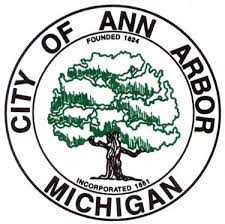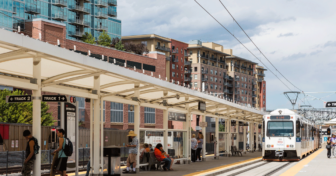Lot of reaction to my post on Ann Arbor’s anti-density development policies. One theme is Ann Arbor can’t be Madison mainly because they are the state capitol and have the two lakes. No question Madison has some assets that Ann Arbor can not replicate. One can argue it’s why they are a city nearly twice as populous. I think it’s harder to argue those unique assets are the reason why the proportion of young professional households in Madison is more than 50 percent greater than Ann Arbor. Ann Arbor needs to go from 8,000 to 13,000 young professional households (2006 data) to have the same proportion as Madison.
I believe that the University of Michigan is a better asset than UW Madison. By creating a quality of place that is more attractive place to live they have leveraged their assets better than Ann Arbor.
We use Madison as a comparison for both Ann Arbor and Lansing/East Lansing both because of the major research university and to take cold weather off the table. Lots of folks think Michigan can’t compete for talent because of the weather, don’t believe it. But in terms of development policy a better model is Portland, Oregon. They have developed the playbook for land use.
Their four decade long strategy has three anchors: a greenbelt to control sprawl, a high density/walkable central city (particularly in their downtown and near downtown neighborhoods) and transit. The result: a city that is both regularly rated one of the “greenest” in the country and a talent magnet. (See this Wall Street Journal article on Portland still attracting young talent even in a down economy. It’s not just jobs that attract mobile talent!)
In environmentally conscious Portland you see high density (yes even tall buildings) development everywhere in and around the downtown. They understand if you want both to be kind to the environment and economic growth the recipe is to limit low density suburban/exurban growth and encourage a high density central city. It’s the way to get folks out of cars and to make transit (particularly rail) financially feasible.
Ann Arbor seems to have convinced itself that it’s good for the environment to restrict growth both outside the city and in the city. But then the only way you can grow is if new workers demanded by new and growing enterprises live further and further away from the city. Which means longer commutes all by car. So much for being kind to the environment.
That assumes that new workers want (or will accept to get the job) to live further and further away from the city. The evidence is an increasing proportion of college educated adults – the workers most needed by the knowledge-based enterprises that Ann Arbor wants to attract – don’t want/won’t accept that kind of low density/long commute living. The trend nationally – that Brookings has labeled bright flight – is a preference for central city living, particularly in high density, mixed use, walkable neighborhoods with transit. That is why vibrant, dense central central city neighborhoods is central to economic growth. Without a larger pool of talent Ann Arbor won’t get the economic growth it wants.







